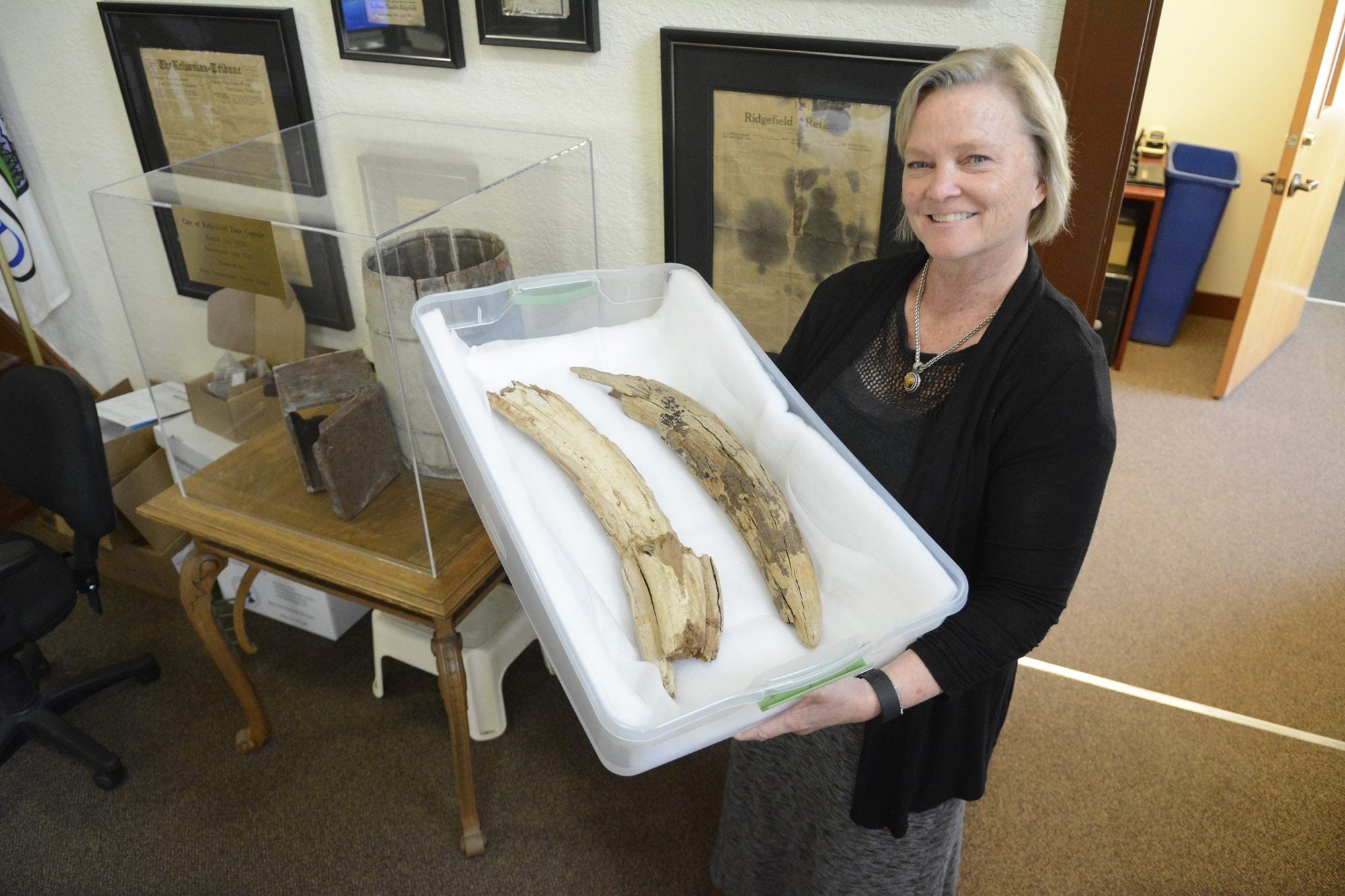The mammoth bones found last month during the football stadium renovation at Oregon State University sparked excitement and curiosity around the nation and reminded Northwesterners of mammalian megafauna that once roamed the region.
The reaction was much the same when construction crews unearthed a mammoth tusk near Ridgefield in 2010.
But whereas the bones at OSU were found at a university and are being studied by its students and faculty, it took several years for the Ridgefield tusk to find a home.
Until they went extinct about 10,000 years ago, mammoths freely roamed the Pacific Northwest.
Today the tusk, all nine pieces of it, is tucked away in three plastic storage bins in an upstairs storage room at Ridgefield City Hall. Considering it’s nearly 20,000 years old, the tusk is looking good for its age; but with its various ochre shades, fissures and layers of what look like tree rings running through its core, the untrained eye might be forgiven to assume it wasn’t the real thing.
“It looks like a tusk made out of wood or a piece of petrified wood,” said Lee Knottenerus, administrative service director for the city of Ridgefield.
When the tusk was stable enough to travel after several years of preservation work, there was some discussion of where it would be displayed, but it ultimately ended up back in Ridgefield.
The city has only had it for less than two years on loan from the Washington State Department of Transportation.
“They had requested it from us,” said Roger Kiers, a cultural resources specialist with WSDOT. “It’s sort of a permanent loan on the agreement that if they no longer wanted it, they’d give it back.”
Construction crews were drilling a new shaft for the Ridgefield interchange at Interstate 5 in 2010 when an auger pulled the tusk up from about 35 feet underground. Brad Clark, a WSDOT inspector, found it while combing through the spoils, but the machine had broken it into several pieces.
According to WSDOT documents, the tusk, which belonged to either a mammoth or a mastodon, and the sediment clinging to it are left over from the great Missoula floods. At the end of the last ice age, cracks erupted in an ice dam holding a tremendous lake — Lake Missoula — and the cataclysmic floods that followed greatly shaped the geography of the Pacific Northwest, including Clark County.
The tusk started crumbling almost as soon as the air hit it. Despite months of painstaking efforts by preservationists, the tusk pieces began to flake and degrade as they dried. It spent the next several years soaking in stabilizing fluids before it was given to the city in mid-2014.
Ridgefield displayed it for a while — and it fit well alongside the 87-year-old time capsule displayed at the back of the historic city hall building — but now it’s brought out only for special events.
“It’s of great interest to people,” Knottenerus said. “We were told be careful about moving it too much because it’s the motion that might disintegrate the pieces.”




